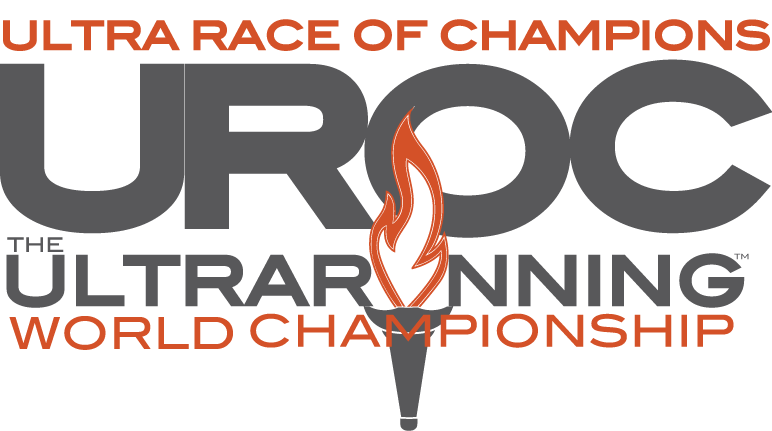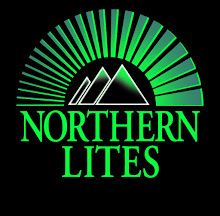Traveling to China begins early this morning. I’ll arrive at DIA with a backpack, a very large duffel bag of gear, and a bike, which will be dismembered and packed in a special bike box. Getting through the airport with this stuff is challenging—and sometimes humorous! Nearly 24 hours of plane travel coupled with a time difference of ten hours will bring me to the Chongqing airport, where I will board a bus and travel three more hours to the race location. Sometimes the travel feels like a race in itself! We’ll have one day to organize gear and adjust to the time difference (well, maybe!) before beginning the race on the 3rd.
LITERARY CONNECTION:
Title: Hong Zicheng. A History of Contemporary Chinese Literature (Zhongguo dangdai wenxueshi)
Document Type: Book review
Full Text:
Hong Zicheng. A History of Contemporary Chinese Literature (Zhongguo dangdai wenxueshi). Translated by Michael M. Day. Leiden: Brill, 2007. XIX, 636 pp. Hardcover $148.00, ISBN 978-90-04-15754-5. When does "contemporary" start in the history of Chinese literature? What qualifies as Chinese literature in contemporary times? Contemporary literature (dangdai wenxue), as used in mainland China, refers to literature produced in the mainland after the founding of the People's Republic in 1949. This specific category of contemporary seems to reinforce the watershed moment of the founding of the People's Republic. It also excludes literary productions from Taiwan, Hong Kong, Macao, Chinese-speaking Southeast Asia, and the Chinese diaspora. Hong's history makes a deliberate choice to revisit the politically determined history of contemporary Chinese literature. Its inherent limitation is obvious. However, such a limited representation, when translated into English, proves to be most constructive in presenting a lost dimension in the study of twentieth-century Chinese literature in the English-speaking world.
Compared to other similar Chinese texts on contemporary Chinese literature, such as Chen Sihe's edited volume A Textbook of Contemporary Chinese Literature (Zhongguo dangdai wenxueshi jiaocheng [Shanghai: Fudan University Press, 1999]) and Tao Dongfeng and He Lei's Chinese Literature Since Reform and Opening Up (Zhongguo xinshiqi wenxue sanshinian [Beijing: Social Science Press of China, 2008]), Hong's history appears deliberately conservative in that it focuses on "traditional forms of poetry, fiction, drama, and prose" (p. xviii). Chen's edited textbook covering the same period incorporates film adaptations of novels. Tao and He's textbook on the past thirty years pays special attention to nontraditional forms of literary and cultural productions, such as online literature, popular cultural icons, and commercialized literature and the literary marketplace.
In English, Pang-yuan Chi and David Der-wei Wang's edited volume, Chinese Literature in the Second Half of a Modern Century (Indiana University Press, 2000), is more a critical survey than a textbook. It covers exactly the same time period, from 1949 to 1999, and it shares with Hong's text a similar vision of bridging the great divide before and after 1949 and resurrecting stimulating literary movements during the second half of the twentieth century. Although Chi and Wang's survey includes fifteen scholarly contributions from mainland China, Taiwan, Hong Kong, and the Chinese diaspora, and covers as wide a terrain as the origins of the contributors, one still finds Hong's text filling an important niche in its insistence on the mainland literary scene of the same period.
Hong's history is a study of the cultural politics of literature under socialism and following its transformations in mainland China from 1949 to 1999. The encyclopedic nature of his work, its ambitious scope, and its attempt to be inclusive necessarily invite suspicion on its analytical depth. However, as is emphasized in the author's disclaimer early on, complete and exhaustive are not the goal. Furthermore, although the author often relies on aesthetic nature in selecting works to be included, he also deviates from that new criticism criterion and ventures beyond to include literary phenomena, art forms, and critical models with "undeniable faults with regard to 'aesthetic nature'" (p. xviii). As a result, periods and works long overlooked in the study of twentieth-century Chinese literature, such as the Seventeen Years of Literature (1946-1966) and Cultural Revolution Literature (1966-1976), are seriously dealt with in this history.
With its focus on both the literary mainstream and its discontents, Hong's history not only resurrects many of the socialist canons often tainted by an overly simplified and politicized reading, but also probes the possibilities for polyphonic literary expressions under socialism. It is equally valuable with regard to the last decade of the twentieth century, as it touches upon the formation of a popular cultural space for leisure alongside the mainstream in the 1990s. Hong's narrative is more sensitive than the official versus unofficial, within-the-system versus outside-the-system type of analysis.
Hong's history consists of two main parts. Part 1 covers literature of the 1950s-1970s, while part 2 deals with literature since 1976 (up to 1999 when the book was first published). Hong pays ample attention to the first half of the fifty years feathered into his history, especially the often overlooked Seventeen Years and the Cultural Revolution. Moreover, Hong starts his history not from the watershed moment of the 1949 founding of the People's Republic. Rather, Hong pays serious attention to the transition in literature, focusing extensively on the literary scene in the 1940s throughout part 1. Hong's attention to the continuities of literary trends also facilitated a vigorous dialogue between the modernist mode of literature of the 1920s and the realist mode of literature of the 1950s. Hong emphasizes how contemporary ideological trends and literary campaigns determined the recommendation and reception of literary heritage, and highlights the brief intermissions between various movements, such as the years between 1952 and 1953, 1956 and 1957, and 1961 and 1962. Further research on these intermissions could be envisaged following Hong's guide.
Hong's special contribution in this history, as far as this reviewer is concerned, lies in his expertise in poetry. For the Seventeen Years and the Cultural Revolution periods, Hong devotes large portions of three major chapters to poetry, and highlights the avant-garde nature of poetry writing under socialism and the political lyricism of poetry from 1950s into the 1970s. For the period after 1976, Hong again foregrounds poetry's central position in the literary history of the 1980s, especially its continuous avant-garde tendency. The two chapters on poetry of the post-1976 period vividly recount the waves of new poetry tide, from the Poetry of the Returnees, to Misty Poetry, to Third Generation Poetry and other dynamic poetic expressions.
Hong's treatment of fiction is equally strong (four major chapters are devoted to fiction before 1976, and three after), though comparatively less exciting, as fiction has always been the mainstream in literary production and historiography in modern China. Hong's contribution lies in his sensitive attention to the myriad forms of fiction writings both before and after the Cultural Revolution. Hong's emphasis on Zhao Shuli restores the centrality of rural area subject matter and its consequent popularity to its rightful place in literary history. His critical attention to revolutionary history subject matter, popular literature, and nonmainstream literature in fiction again demonstrates his serious engagement with mainstream popular culture under socialism. It provides readers valuable vignettes to enter into the dynamic field of literary production amid political intrigues and personal vicissitudes. Hong's discussion of post-1976 fiction is at once eclectic and wideranging. Liu Xinwu, often the first representative of scar literature in the initial post-Cultural Revolution period, is highlighted with his 1990s attempt to advocate "refinement of literature of the masses, popularization of refined literature" (p. 307). Chen Kaige, often only known as one of the leading fifth-generation film directors, is specifically mentioned because of his Dragon's Blood Tree, a memoir of the Cultural Revolution and of "remorseful introspection" (p. 314), published and distributed not in mainland China but in Hong Kong.
Hong covers prose and theater rather succinctly, in concise prose and with insight. Each genre before 1976 is given one chapter. Prose is discussed in another chapter after 1976, but no individual chapter is devoted to theater in the second part of the history. Given the heightened political nature of these genres, it is regrettable (but understandable given the limit of space) that they are not treated in more details and with more consistency. The single chapter on prose highlights the renewed interest in the avant-garde nature of "prose, special reports, and reportage" in the year 1958, when these prose genres were called "the responsive nerves of the age, the bulge call to fight" (p. 174). Lao She is the only playwright given a separate section in the only chapter on theater, and his familiarity with social life in old-time Beijing is described as being put to use in his effort to represent the "true people's nature of the new government" in the 1950s (p. 192). Post-1976 theater is treated in a single paragraph highlighting the debate on a "crisis in theater" (p. 288). Huang Zuolin and Gao Xingjian are singled out as representatives of theory and practice of theater during this period, respectively.
Such a genre-centered approach does not do justice to the wide-ranging and historically situated approach taken in Hong's text. In fact, what seems to be Hong's insufficiency is often supplemented by his contextual chapters, which often take into consideration a cross-genre and a highly politically and artistically sensitive approach.
For example, in the contextualizing and synthesizing chapters such as chapter 13 of part 1, "Towards 'Cultural Revolution Literature,'" Hong highlights the direct link between art, "action" (especially political action), social movement, and "the direct 'aesthetic-ization' of 'politics'"(p. 213). In the chapter "The Re-construction of 'Classics,'" concerning the Cultural Revolution, Hong emphasizes the use of the down-to-earth yangban (rather than the more elite-sounding jingdian, or classics) as the core concept to anchor such an experiment as the model operas, or yangbanxi. According to Hong, the effort to popularizing yangbanxi reached its height in 1970. Its popularization strategies, as far as I understand, vividly echo the strategies of the guerrilla drama warfare of the 1930s and 1940s. Such a connection could enrich our understanding of the institutional continuities before and after 1949, a key theme that Hong demonstrates throughout his text.
Hong's sensitive approach to the continuities of literary history not only connects the Seventeen Years and the Cultural Revolution literature to the post-1976 period, but also traces the pre-1949 developments in his history of the literature of the People's Republic. Although constantly putting contemporary scholarship in quotation marks may soften the critical edge of Hong's history as a whole, the very fact of their inclusion enriches his text with a vivid historicity.
For students and scholars of Chinese literature, as well as for the interested layperson, Michael M. Day's translation can be considered better than the original in some aspects. It includes not only a glossary of terms, organizations, and periodicals, a bibliography, and a list of titles of works cited (that is, within the text but absent from footnotes or bibliography), but also a detailed index of personal names with Chinese characters accompanying Chinese names. All are added to the English translation with meticulous care for the sake of serious readers, who may be inspired to pursue further certain threads laid out in the original Chinese text.
Hong's panoramic history of contemporary Chinese literature, now in English translation for the first time after its many printings in Chinese, will be indispensable for both teaching and research. It will provide a solid basis for the teaching of Chinese literary history in both undergraduate and graduate programs. Its thorough and wide-ranging coverage from 1949 to 1999 touches upon many fascinating and understudied texts in that history, which can be points of entry for students and scholars of contemporary China to further their researches.
Liang Luo teaches modern Chinese literature and culture at the University of Kentucky. She is interested in the avant-garde as an international movement and its relationship with modern China, with particular focus on the performance, politics, and popularity of the avant-garde in the context of twentieth-century China.
Luo, Liang
Source Citation
Luo, Liang. "Hong Zicheng. A History of Contemporary Chinese Literature (Zhongguo dangdai wenxueshi)." China Review International Summer 2009: 517+. Literature Resources from Gale. Web. 23 Aug. 2011.

















